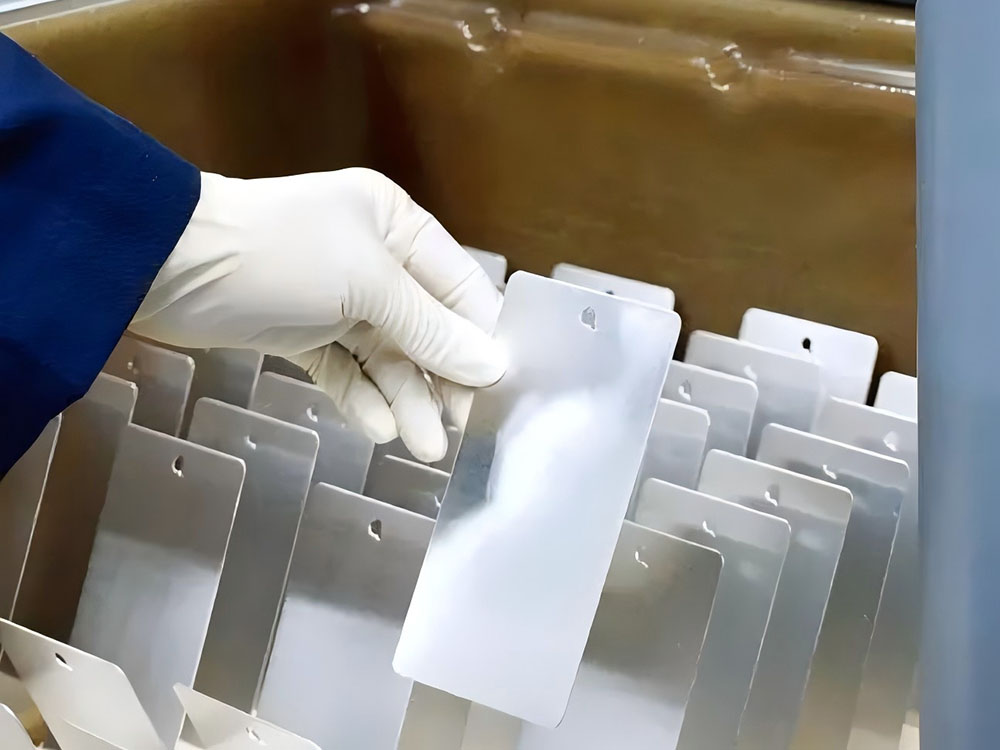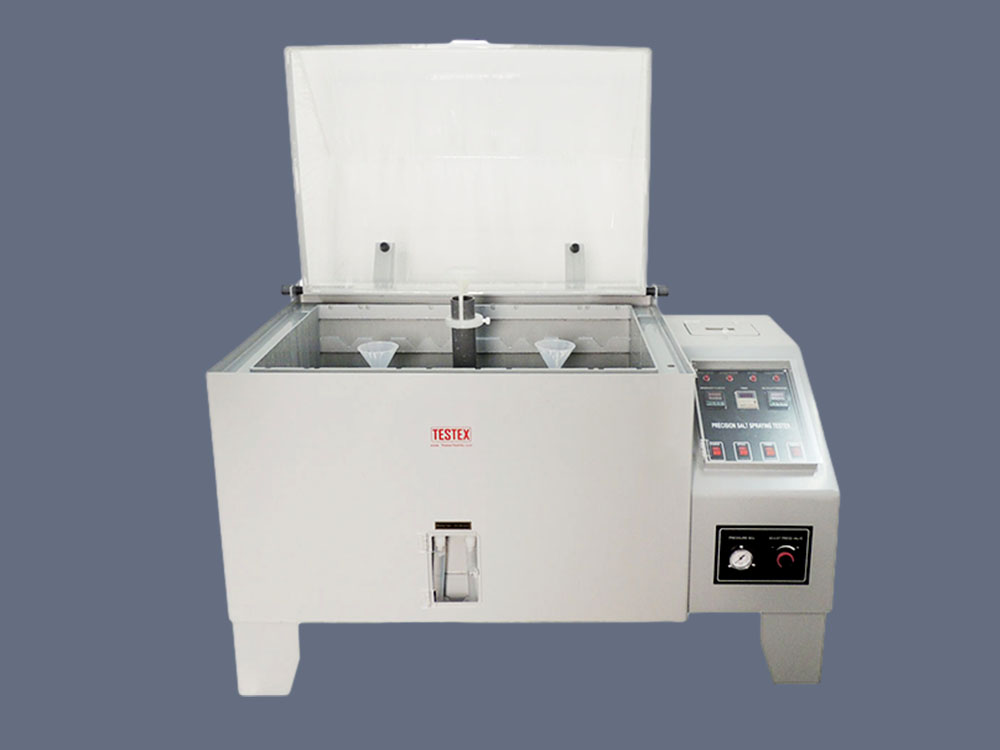Why is it important to do a wet and dry comparison in salt spray testing?
Salt spray tests compare wet and dry methods. Their goal is to better assess a material’s corrosion resistance. We can improve product design by comparing corrosion in wet and dry conditions. It will help us understand how the material behaves in different environments.
In salt spray testing, wet and dry comparisons are very important. This is mainly due to the following aspects:
Salt spray tests are often used to mimic marine, humid environments. By controlling the temperature and humidity in the test chamber, we can better simulate the environment. This will make the test results more accurate and comparable.
Controlling test parameters:
The right temperature and humidity are key. They ensure a stable, uniform salt spray during the test. This improves the test’s repeatability and accuracy. Temperature and humidity affect corrosion. Proper control can ensure reliable test results.
Protecting the specimen:
Controlling the temperature and humidity can protect the specimen. It will prevent condensation and water droplets from dripping on it. This helps to ensure the reliability of test results.
Improve test efficiency:
High temperature and humidity speed up corrosion. This shortens tests and cuts costs. To assess materials’ corrosion resistance, compare corrosion under wet and dry conditions.
In summary, the salt spray test compares wet and dry conditions. It aims to assess materials’ corrosion resistance more accurately. This will help improve product design.
Why do I need to clean the sample after the salt spray test?
Reasons for cleaning samples after a salt spray test
The main purpose of cleaning the sample after the salt spray test is to remove the salt stains and corrosion on its surface. This is to accurately assess the sample’s corrosion. The salt spray test will leave a lot of salt and corrosion on the sample. These residues will affect the judgment of its corrosion degree. So, cleaning the sample is vital. It ensures the test results are accurate.
Specific steps for cleaning the sample after the salt spray test
Cooling and removing the sample:
After the test, the sample is first cooled at room temperature. Then, it is carefully removed to avoid damaging it.
Cleaning:
Use clean running water (max 40°C) to gently wash the sample. This removes salt stains and corrosion from the surface.
For small specimens, rinse them underwater for 5 minutes. Then, wash them with distilled or mineral water. Finally, shake them by hand or blow on them to remove the water.
For large specimens, wash and blow dry them per the specs.
Drying:
After cleaning, blow dry using compressed air. Use a pressure not exceeding 200kPa and a distance of about 300mm from the specimen.
You can also choose to dry naturally or use an air gun. Use the method per the enterprise standard or customer requirements.
The above steps will ensure the sample’s surface is clean and dry. This will provide accurate data for the corrosion assessment.
What surface treatment should we perform before the salt spray test?
Precautions for Salt Spray Test
Specimen pre-treatment and placement
The specimen must be pre-treated before the test. It must be clean and free of impurities. For cleaning, use appropriate organic solvents and clean, soft brushes. Avoid abrasives or solvents that may erode the specimen’s surface. Avoid contaminating the cleaned specimen again.
The specimen should be in the test chamber at a 20°±5° angle. This will ensure uniform settlement on its surface. Do not spray the specimen’s surface with salt mist. The specimens must not touch each other or any metal objects outside the support.
Configuration and use of salt solution
The salt solution must use high-quality sodium chloride. Its impurities must meet the relevant standards. The test must control the pH and salt concentration. This is to ensure stable test conditions.
Regularly measure the pH and salt concentration during the test. This will ensure the test conditions are accurate.
Control during the test
The test environment must be stable. So, control the temperature at (35±2)°C.
Ensure uniform salt spray corrosion in all exposed areas. Maintain salt spray conditions in the exposed area continuously.
Post-test treatment
After the test, clean and dry the specimens for later tests.
Use appropriate solvents and methods to clean. This avoids damaging the specimen.
Definition and application field of salt spray test
The salt spray test is a method to assess corrosion resistance. It involves placing a specimen in a salt spray environment. This simulates the natural environment’s corrosive conditions.
The test is widely used in automotive, electronics, and aerospace fields. It ensures materials’ safety and service life in harsh environments.
Why is the use of a razor blade scribing tool not permitted in the salt spray test?
The salt spray test does not allow razor blade scribing tools. They may affect the test results. Scribing in a salt spray test simulates scratches from actual use. It tests a coating’s or material’s corrosion resistance. However, using the wrong scribing tool may cause deep scratches. These may lead to more corrosion in the salt spray test, affecting the results.
Using a razor blade scribing tool with too much force may slice off the tip of the blade. This will leave deeper marks on the coating. This will affect the test results. It may also cause rust marks to hang or contaminate the board. This will make it hard to assess grades. The standard usually requires special scribing knives. They must have a specific width and material. This is to ensure the scribing marks are consistent and controllable.
Also, standards like QCT484 require treatments before the salt spray test. They include cleaning, labeling, and protecting the specimens. These standards also require tests of scribed treatments to be accurate and repeatable.
Why is the salt spray test brine concentration 5%?
Reasons for 5% brine concentration in salt spray test
The reason for a 5% brine concentration in a salt spray test is that the corrosion rate reaches its maximum at this concentration. The effect of the concentration of the salt solution on the corrosion rate is related to the material and the type of cover layer. When the concentration is less than 5%, the corrosion rate of steel, nickel and brass increases with the increase in concentration; when the concentration is greater than 5%, the corrosion rate of these metals decreases with the increase in concentration.
The effect of salt solution concentration on the corrosion rate
As the concentration of salt solution increases from 1% to 7%, the corrosion area shows a trend of increasing and then decreasing. At 5% concentration, the corrosion area of the specimen reaches the maximum value. This is due to the positive correlation between the corrosion rate and the oxygen content in the salt solution, which increases with the increase of salt concentration in the low concentration range. When the salt concentration increases to 5%, the oxygen content reaches relative saturation, the oxygen depolarisation ability is the strongest, the fastest corrosion. If the salt concentration continues to increase, the oxygen content decreases accordingly, and the corrosion effect is weakened.
The practical application and standard of 5% brine concentration
5% NaCl solution is closer to the salt concentration of seawater, so most of the car company standards have chosen 5% salt concentration. In the process of neutral salt spray test, it is necessary to provide salt spray continuously, the temperature is around 35℃, humidity is above 95%, and sodium chloride brine (5% concentration) is used to make a settlement of 1 ~ 2mL/(h-80 cm²), which will be settled on the surface of the object to be tested, and then the test time is determined according to the actual needs to determine the corrosion situation.
For more environmental test chamber, Please visit: https://chiuventionclimatechamber.com
For more environmental test simulation programmes,environmental testing knowledge, instrument knowledge, and environmental testing laboratory knowledge, please contact us: [email protected]


